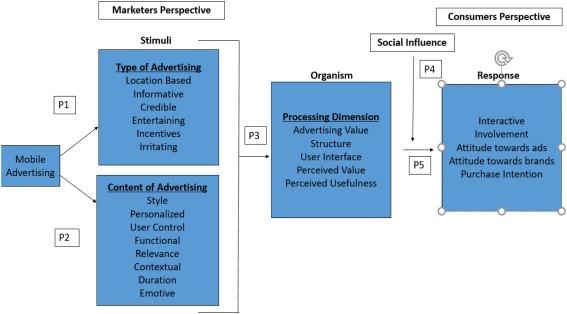Measuring the Impact of Bite-Sized Learning: Key Metrics & Proven Results
Bite-sized learning—also known as microlearning—is transforming employee training, onboarding, and skills development worldwide. As more organizations shift to digital learning environments, understanding how to measure the impact of these microlearning modules is becoming critical.This complete guide explores the most effective metrics, best practices, and the proven results driving the rise of bite-sized learning in today’s workplaces.
What is Bite-Sized Learning?
Bite-sized learning refers to delivering educational content in short, focused bursts—typically lasting five to fifteen minutes.These concise modules are designed for rapid consumption and retention, making them ideal for busy professionals. Common formats include:
- Short videos
- Interactive quizzes
- Infographics
- Flashcards
- Micro-articles
- Mini-scenarios and simulations
This approach not only caters to modern, on-the-go lifestyles but also leverages cognitive science principles, such as spaced repetition and active recall, to drive better learning outcomes.
Why Measuring the Impact of Bite-Sized Learning Matters
Understanding the true effectiveness of microlearning initiatives is essential for L&D professionals, HR managers, and business leaders.Key reasons include:
- Demonstrate ROI: Justify learning investments with clear data.
- Optimize Learning Design: Identify what works best and improve future content.
- Enhance Learner Engagement: Uncover which modules resonate most with your audience.
- Support Business Goals: Align learning outcomes with organizational objectives.
Key Metrics for Measuring Bite-Sized Learning Impact
To evaluate the success of your bite-sized learning initiatives, consider tracking these essential metrics:
1. Completion Rates
How many learners finish each microlearning module? High completion rates indicate engaging content and effective design.
- Tip: Compare completion rates for microlearning modules against longer-form courses to showcase effectiveness.
2. Time to Completion
Microlearning’s promise is reduced time away from work. Measuring how quickly users finish modules demonstrates efficiency and convenience.
3. Engagement Metrics
Track metrics such as:
- Click-through rates (for interactive elements)
- Repeat visits or replay rates
- Interaction with supplementary resources
4. Knowledge Retention
Assess retention with pre- and post-learning assessments, spaced quizzes, or on-the-job performance checks.
- Proven Result: Studies consistently show higher retention rates with spaced, bite-sized learning compared to conventional lectures.
5. Learner Satisfaction & Feedback
Collect qualitative and quantitative feedback through surveys and course ratings to gauge perceptions of content relevance, usefulness, and usability.
6. Business Outcomes & Performance Metrics
Ultimately, the goal of learning is to drive organizational change. Analyze KPIs such as:
- Employee productivity improvements
- Reduction in customer service errors
- increase in sales numbers post-training
- faster onboarding for new hires
Proven Results: Case Studies in Bite-Sized Learning Impact
case Study 1: Global Tech Company – Accelerated Onboarding
Challenge: Traditional onboarding training took over a week and saw high drop-off rates.
Solution: Implemented mobile-amiable, bite-sized modules covering key procedures.
Results: Onboarding completion rates jumped from 67% to 95%, average completion time dropped by 40%, and knowledge assessments improved by 28%.
Case Study 2: Healthcare Provider – Ongoing Compliance Training
Challenge: Compliance training was seen as tedious, leading to low engagement.
Solution: Switched to microlearning videos and quizzes on critically important policy changes.
Results: Module completion soared to over 90%, error rates on compliance dropped by 35%, and employee satisfaction with training increased substantially.
Case Study 3: Retail – Sales Enablement
Challenge: Staff needed to frequently learn about new products, but traditional training was time-consuming.
solution: Introduced weekly microlearning updates accessible by smartphones.
Results: Faster product adoption, improved customer satisfaction scores, and a 22% increase in quarterly sales conversion rates.
Benefits of Measuring Bite-Sized Learning Effectively
- Continuous Betterment: Data-driven adjustments lead to more engaging and efficient learning.
- personalized Learning Paths: Insights enable tailored recommendations for individual learners.
- Enhanced ROI Exhibition: Clear metrics help secure executive buy-in for ongoing learning investments.
- Greater Scalability: Success metrics support replication of microlearning experiences across different teams or regions.
Practical Tips for Tracking Microlearning Success
- Leverage a Learning Management System (LMS): Most modern LMS platforms offer robust analytics tools for tracking key microlearning metrics.
- Integrate Real-time Feedback loops: Include in-module surveys or quizzes to gather instant user data and make agile improvements.
- Set SMART Goals: Define Specific, Measurable, Achievable, Relevant, and time-bound objectives for your microlearning initiatives.
- Benchmark Regularly: Compare results before and after implementing bite-sized learning, and track longitudinal trends.
- Promote Data Transparency: Share results with stakeholders to foster a culture of continuous learning and accountability.
first-hand Experiance: Lessons Learned from Implementing Bite-Sized Learning
“After adopting bite-sized learning in our organization,we saw not only a boost in completion and retention rates but also a marked improvement in job performance. Employees appreciated the flexibility,and managers found it easier to pinpoint learning gaps with the granular progress data. the agility to quickly update modules also meant our content stayed fresh and relevant.”
— L&D Manager, Mid-Sized Manufacturing Firm
Conclusion: data is the Secret Sauce for Bite-Sized Learning Success
Measuring the impact of bite-sized learning empowers organizations to maximize the effectiveness of training programs, enhance learner engagement, and drive real business change. By focusing on completion rates, engagement, retention, and business outcomes, organizations can confidently demonstrate the true value of microlearning.
Whether you’re just starting your microlearning journey or seeking to level up your analytics, keep these key metrics and proven results front of mind. Your data-driven approach will not only secure leadership buy-in but also foster a culture of continuous learning and innovation.

